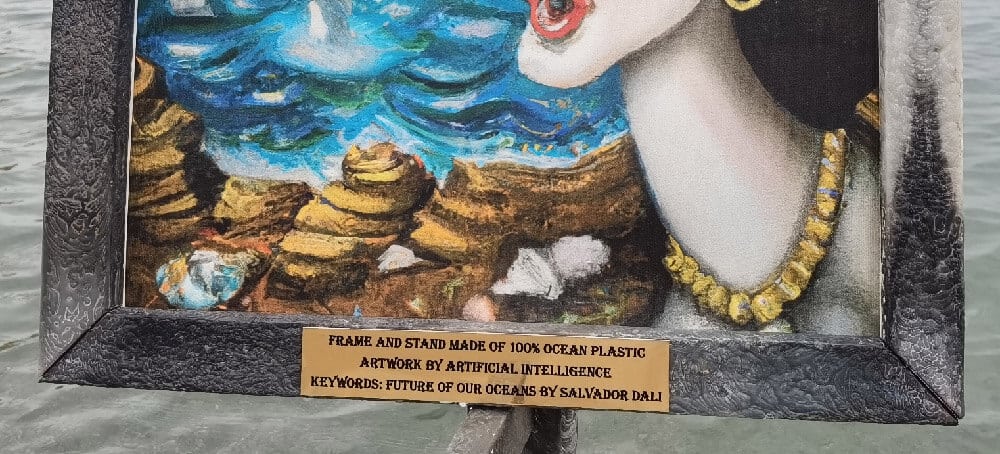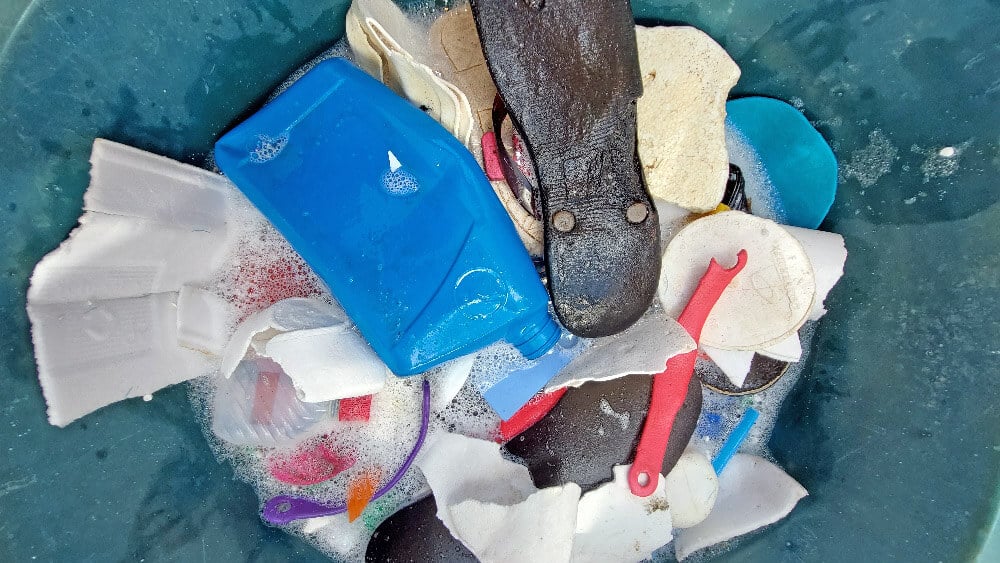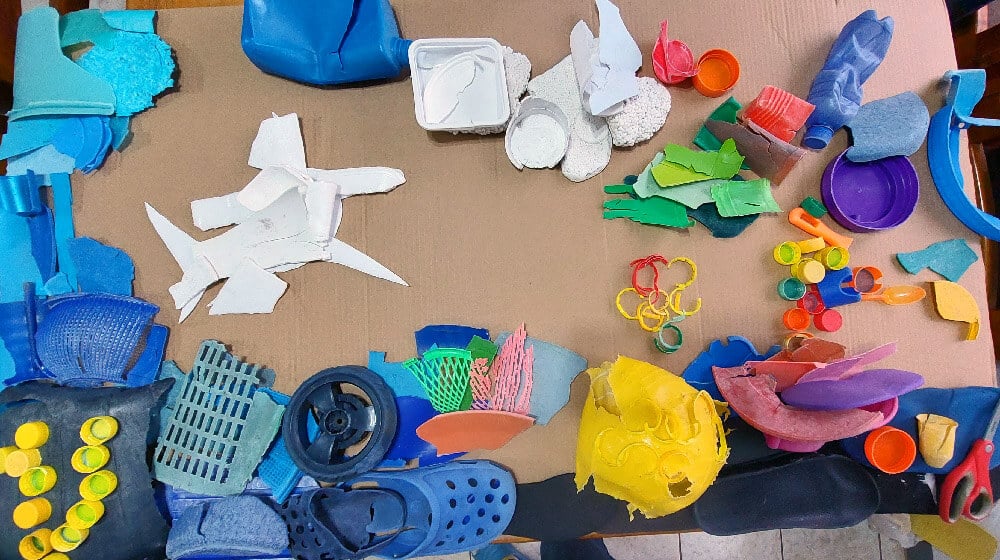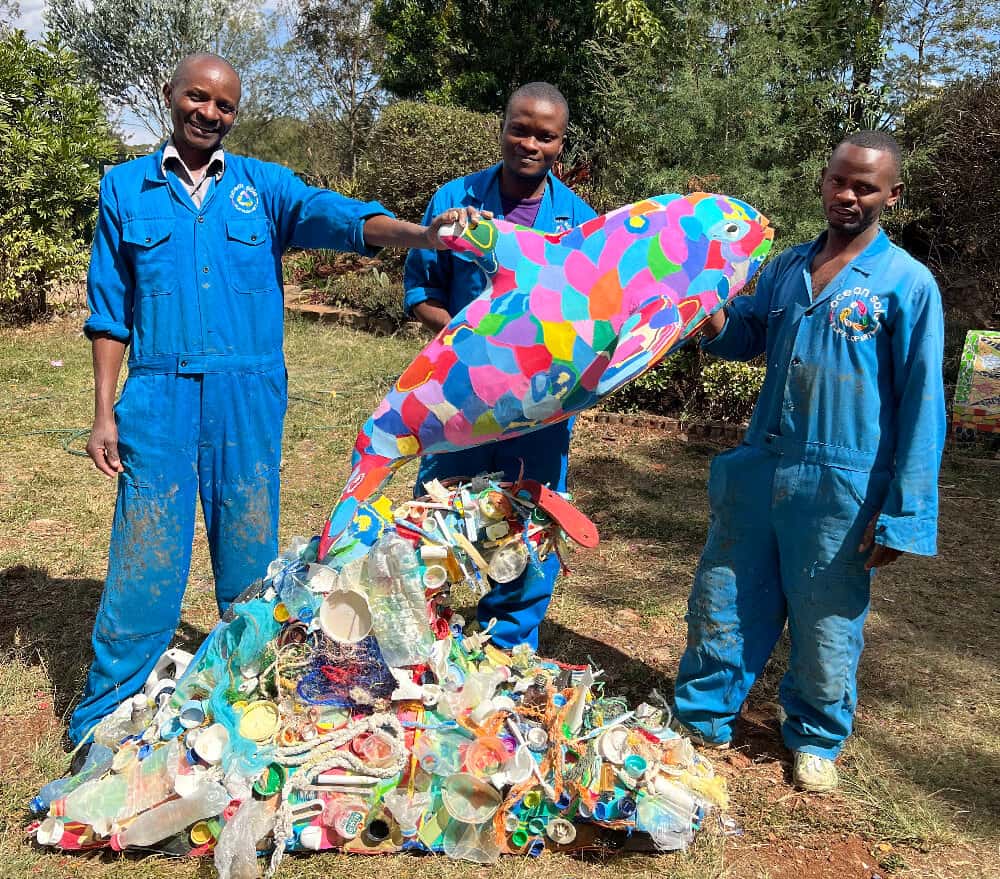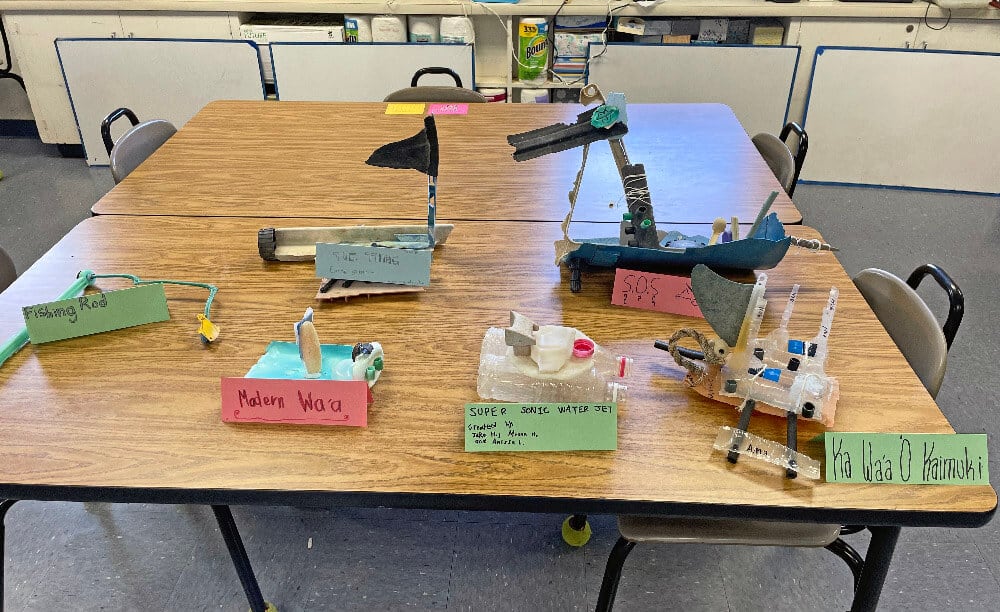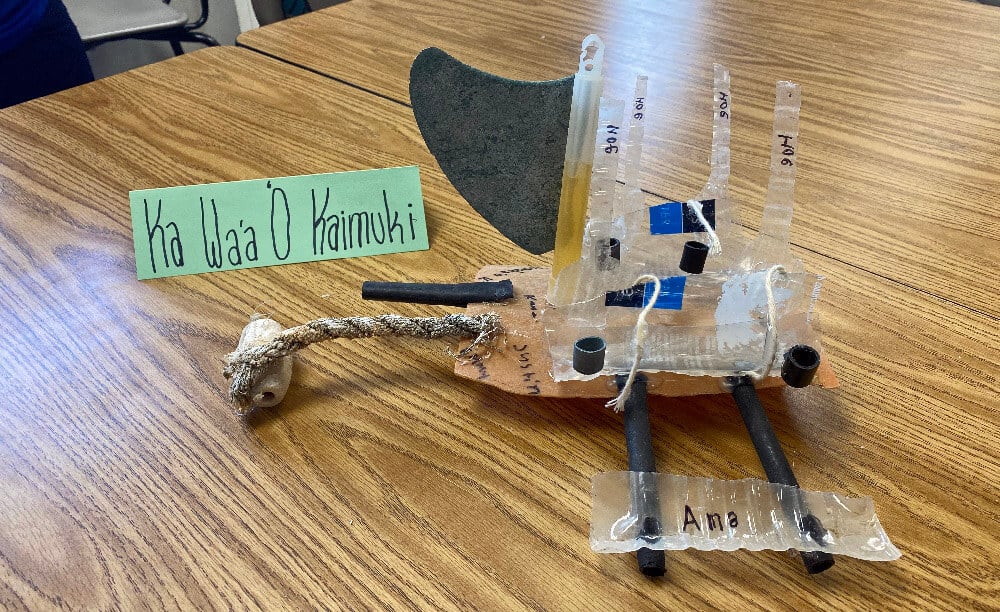Art Competition Entries & Results
We are thrilled to share the official entries into the 2022 Global Ocean Cleanup Art Competition, visible below. Each piece of artwork was created using marine debris collected during the 2022 Global Ocean Cleanup.
Our panel of expert judges have reviewed and scored each piece of artwork using a standard set of criteria, and we are pleased to announce the following judges' selections:
- Judge's Choice Winner: Ocean Sole (Kenya)
- Runner-Up: Semillas del Océano (Guatemala)
Congratulations! Each project will receive an additional $500 in support from Oceanic Society.
In addition to the judges' selections, we invited the public to help choose an Audience Choice winner through an online vote. 2,026 votes were cast with the following result:
- Audience Choice Winner: Ocean Sole (Kenya) – 1,226 votes
Congratulations! As Audience Choice Winner, Ocean Sole will receive an additional $500 in support from Oceanic Society ($1000 total for their two wins).
Thank you to all of the projects for their incredible work, to our judges for their time and consideration, and to everyone who voted to select an audience choice winner!
Entry 1: Asociación Ambiente Europeo - Spain
Description: Frame and stand created using ocean plastic collected during the 2022 Global Ocean Cleanup, which was shredded and extruded; within the frame is a piece of artwork generated by Artificial Intelligence from the prompt "Future of our oceans by Salvador Dali." (Note: the artwork was displayed placed the ocean for the photograph but was not left there)
Artist Statement: The convergence of our current environmental crisis meeting technology through art. We want people to slow down and ask, what am I looking at? Artificial intelligence (AI) allows us to exaggerate this moment and delivers an emotion to viewers in an atypical approach for environmentalism. Upon closer inspection the viewer reads:
"Frame and stand made of 100% OCEAN plastic
Artwork by Artificial Intelligence
Keywords: Future of our oceans by Salvador Dali"
It is interesting to us that AI created a picture with these graphics, what it already knows, and the sadness it portrays. The floating picture is reminiscent of the very trash we recycled to create the frame. As we are based in Spain, we referenced a Spanish artist in the AI prompt to pay homage to the land that inspired both him and us.
Entry 2: Semillas del Océano - Guatemala
Description: The art piece, titled "One Plastic Ocean," was made using the three-dimensional collage technique that consists of agglomerating pieces of different origin creating a unified tone. It is created solely of plastic material (including styrofoam) found on the beach of El Paredón, Sipacate, in Guatemala. The main types of found objects used include: plastic fragments, styrofoam fragments, sandals, toys, straws, plastic bottles and plastic caps.
After the beach cleanup, marine litter of various colors and shapes were selected. These objects were washed and disinfected the following day and left to dry in the sun. Later an artistic composition was made that spread through the shape and colors of the found objects
Artist Statement: One of the most important and vulnerable ecosystems on the planet was chosen as the art piece: coral reefs. We sought to adapt the garbage items to create different species such as hard and soft corals, marine sponges, sea urchins, algae and fish.
We decided to also include species that are in danger of extinction and that are associated with this ecosystem, such as the hammerhead shark and sea turtle. These species are threatened, among other reasons, by the pollution that reaches the sea, either because they get caught in ghost nets, because they drown in garbage, or because they ingest plastics.
We decided to put both these species and a coral in white to emphasize that if we continue to pollute our ocean, many species will disappear. In this case, white represents absence and loss.
Entry 3: Ocean Sole - Kenya
Description: The artwork was created in our classic Ocean Sole style. We used recycled foam to fill the inside of the sculpture, which was covered in flip flips that were then carved and sanded to create a realistic Vaquita dolphin shape. Lastly, other trash that was collected from the beach was stuck around the base, including toothbrushes, bottles, and fishing rope. The final sculpture depicts a Vaquita dolphin jumping out of a sea of trash.
Artist Statement: Bryant was the head artist for this sculpture; in his words: "It was great to work on this piece for Oceanic Society. Usually our artwork only uses flip flops and it was nice to create a sculpture using all the ocean trash. I like knowing my work is having a positive impact. Also, we have never sculpted a Vaquita dolphin so it was fun to make something new. We hope that showing the dolphin jumping out of the trash will make people think more about what they throw away.” The Vaquita is a critically endangered species and has been subject to much attention this year; we hope this artwork will help raise awareness by showing the dolphin jumping out of a sea of trash.
Entry 4: Sustainable Coastlines - Hawaii
Description: Sustainable Coastlines Hawai’i educators challenged the Kaimuki Middle School 6th grade math students to envision a future where our oceans continued to be plagued with plastic pollution. Plastic seas, plastic in sea life, and plastic-filled humans. It’s a daunting reality. However, we want to inspire and encourage positive change through youth action and innovation! So, the artwork created by students is key to using problem-solving skills, creative visioning, and, most importantly, fun, humor, and teamwork in their art projects. In total, students created 16 pieces of artwork using collected debris: 7 wa'a (voyaging canoes), 3 musical instruments, 1 fishing pole, 4 abstract art pieces, and 1 poem to describe the art being made.
Artist Statement: We chose to build wa’a (voyaging canoes) and musical instruments with the collected marine debris as a nod to the school’s mascot, the Kaimuki Middle School Voyagers. Wa’a (canoes) in Hawai’i also holds a dual meaning because this is a voyage that youth undertake as islanders to solve the issue of plastic pollution. The musical instruments are ways to make the debris have another life through their expression. We hope to inspire people to pause and ask more questions about the marine debris collected, such as; How did it wash up on a remote beach in Hawai’i? What purpose did it have? What can we use instead of plastic? Students created placards to name and describe their art pieces with each creation! Enjoy!
Entry 5: Young Environmentalists Programme - India
Description: The art was created by students and especially young women in Lakshadweep Islands by arranging fragmented plastic pieces collected on the beach during the Global Ocean Cleanup. Although it is a common way to create and display art, we used simple methods in order to allow girls from the community to sit and take part in the art submission, which made the process special. Our aim was to also promote gender equality through this activity. Usually the girls hold back participation due to being shy or conservative. Through the art we wanted to display a message about the value of the octopus in the ocean without preaching. Locals hunt for octopus very frequently to sustain their income and for food during heavy monsoon and storm seasons. Sustainable fishing for ocean resources was outlined.
Artist Statement: Our art depicts various fish, octopus, and sharks on the sand, using the sandy beach as a background to emphasize the need to keep our beach clean. We purposefully didn’t show an ocean full of fish in the design, as we wanted to send the message that there are going to be less fish in the ocean if we continue to pollute our oceans. Through this interactive and inclusive artwork, we hope to build a strong momentum for the youth to take leadership in ocean conservation and addressing ocean plastics.



